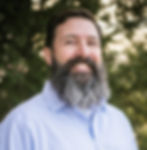
The FCC is sponsoring a new program in 2020 called the Rural Digital Opportunity Fund (RDOF) aimed at bringing broadband to underserved communities. It has been compared to the reverse auction process of CAFII but will have at least $16 billion allocated for census areas with zero broadband connectivity and another $4 billion for census areas of very low broadband service. In his statement about RDOF, FCC Commissioner Pai said this will be the FCC’s “single biggest step yet to close the digital divide, our top priority.”
I think this is exciting because it tells me the federal government is getting serious about addressing our country’s broadband inadequacies.
In our previous blog, “The Case for a National Broadband Project”, some of the topics I mentioned were One Touch Make Ready (where instead of each individual communication company making changes on a pole in sequence – a very lengthy process – a single qualified vendor can make all the comm moves and any power changes, hence “making the pole ready” for a new attachment) and working on legislation with local communities to provide easier access to the city’s right of way. I would like to follow up on that and talk about an idea that would support the accuracy and speed of field data collection needed to handle the kind of scale that the RDOF funding should generate.
Start with LiDAR Foresite Group has been using LiDAR successfully for the past few years to capture field data in both aerial and underground environments for designing fiber optic networks. LiDAR stands for light detection and ranging. It is a remote sensing method that uses light in the form of a pulse laser to measure ranges. From this you can quickly build a highly accurate 3-D model of an environment. Read more about that here.
However, just having a 3-D model isn’t good enough. You have to be able to collect critical measurements from specific features in that environment such as poles, trees, streetlamps, buildings, storm drains, etc. These measurements are not just telling you where these features are located, but also providing accurate related data, such as how tall is a pole, what attachments are on that pole, and the height of a point of attachment on a pole. After LiDAR is collected (a very fast process where cameras are usually mounted to a vehicle driving around 35mph), a human must go into the LiDAR point cloud environment and “click-click-click” with a mouse to create those measurements. This gets translated in to geospatial data that is used in a GIS database for design activities. This process is labor-intensive, expensive, and time-consuming.
Add Artificial Intelligence With the advances in machine learning and facial recognition, we wondered why artificial intelligence couldn’t learn how to recognize a simple object such as a pole, a street lamp, sidewalk, etc. (much easier to comprehend than a unique face), and then learn how to take predetermined measurements about those features. We have started down this path, but we aren’t a software company and are seeking additional partnerships to fully develop this software.
If you’ve been around this industry very long, you’ve heard of automated design processing. These are great design tools that need additional input to identify the constructible paths on which to apply their algorithms. We know that tools like auto-design will soon replace traditional design practices. Yet, we have to remember that old acronym “GIGO” (garbage in, garbage out). The real value of auto-design relies on the quality of the data going into the process.
Bridge the Digital Divide Once we create this machine-based extraction process from highly accurate LiDAR-collected point cloud data, imagine the rate in which we will be able to extract the critical data need to auto-design aerial and underground fiber routes, identify and incorporate optimal sites for 5G antennae (navigating buildings, trees, and signs) and any myriad of other smart city applications. With this level of data capture, imagine how fast we can calculate Make Ready Engineering. We will calculate make ready solutions for miles of poles in just days.
This process could also be extremely helpful to rural communities which desperately need access to the RDOF funding to close their digital divide. Many of these communities can’t rely on traditional design methods because of speed and cost. With a machine-based LiDAR extraction process, we could really put the $20 million RDOF funding from the FCC to work for the maximum benefit!
This idea can even go beyond the broadband and fiber design applications. We are starting to see a significant increase in communities developing their GIS platforms to accommodate the needs of growing cities. This same machine-based object identification and data extraction process could be used to quickly and accurately map communities where downtown areas are being restored and revitalized, for street projects, for tracking protected tree data, or for auditing age old plat data for fire plugs and water valves.
At Foresite Group, we embrace technology and strategic partnerships. If you have interest or experience with these topics, please reach out to us. We would love to hear from you.

About Lee Comer
Lee Comer is the Broadband Engineering Services Practice Area Leader at Foresite Group, LLC. He brings over 20 years of experience as a designer, supervisor, and project manager in the telecommunications industry. A native Alabamian, Lee earned his B.S. and M.S. in Industrial Design from Auburn University. With a passionate focus on improving the way people relate to each other, information and technology, and their environment, Lee translates his knowledge of design, construction, and installation of communication networks into a comprehensive infrastructure program to create connected communities.
